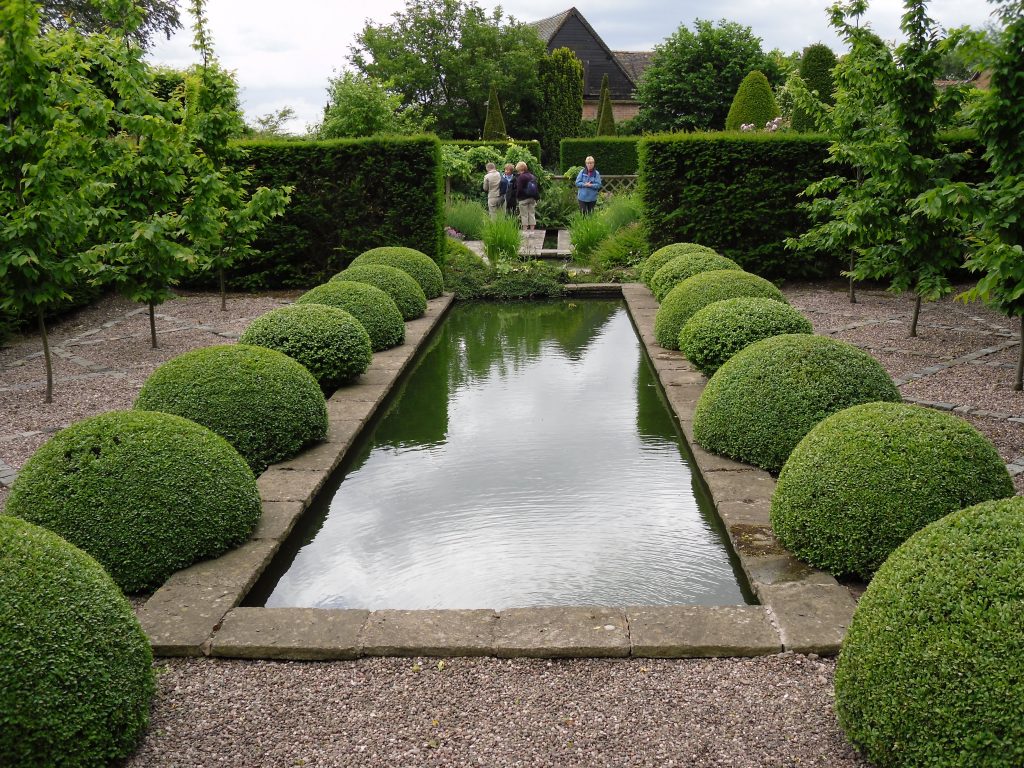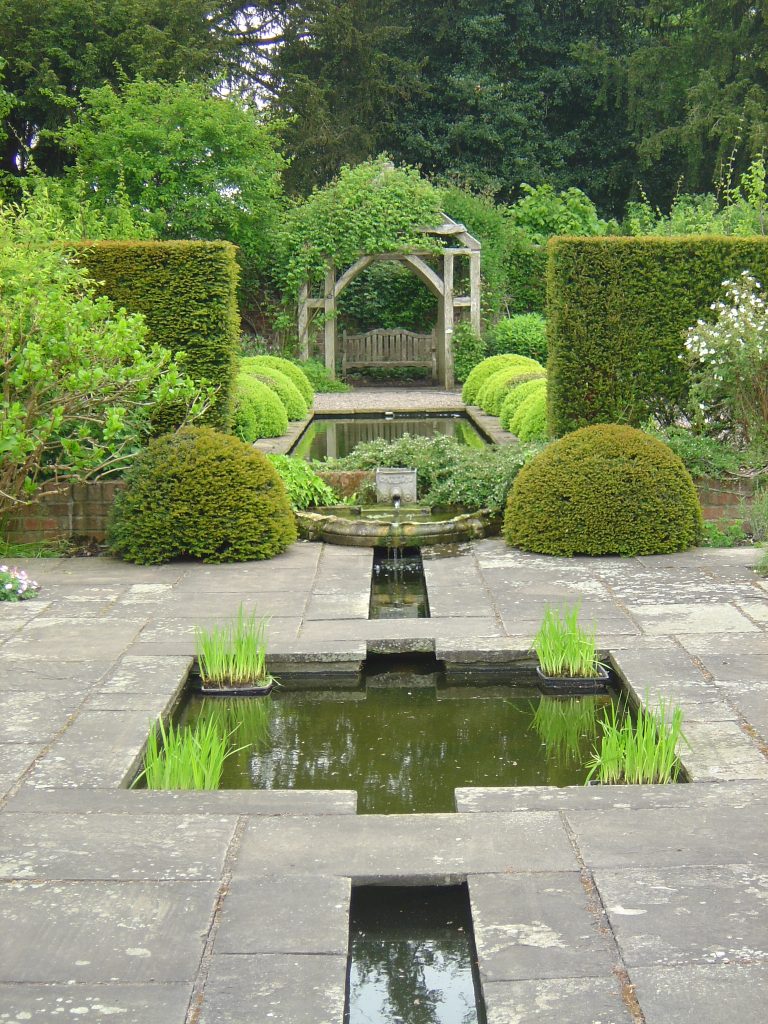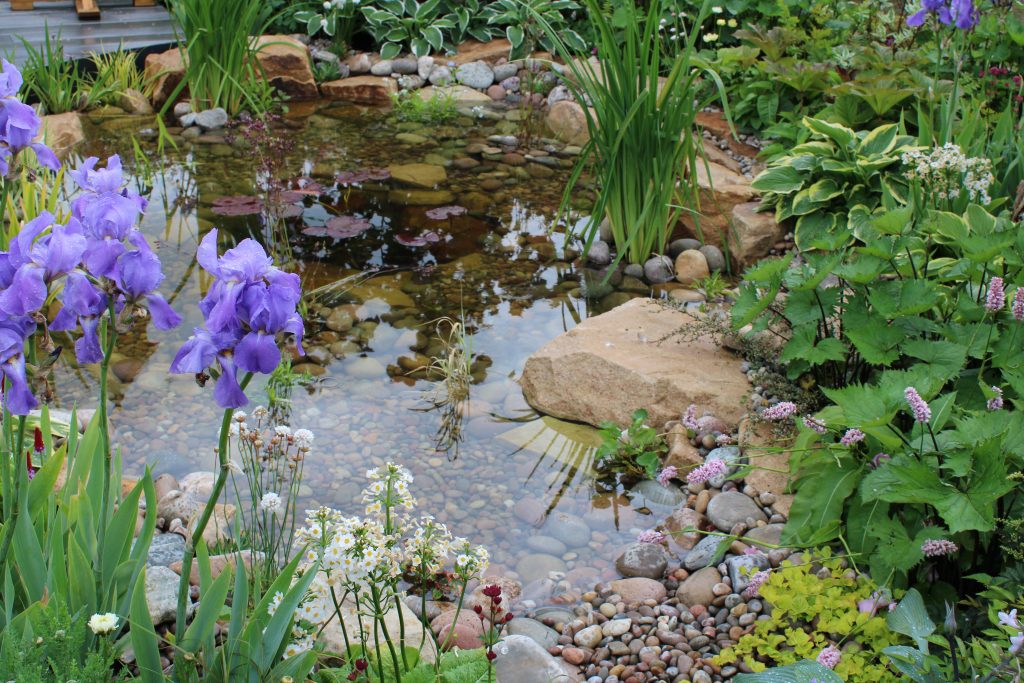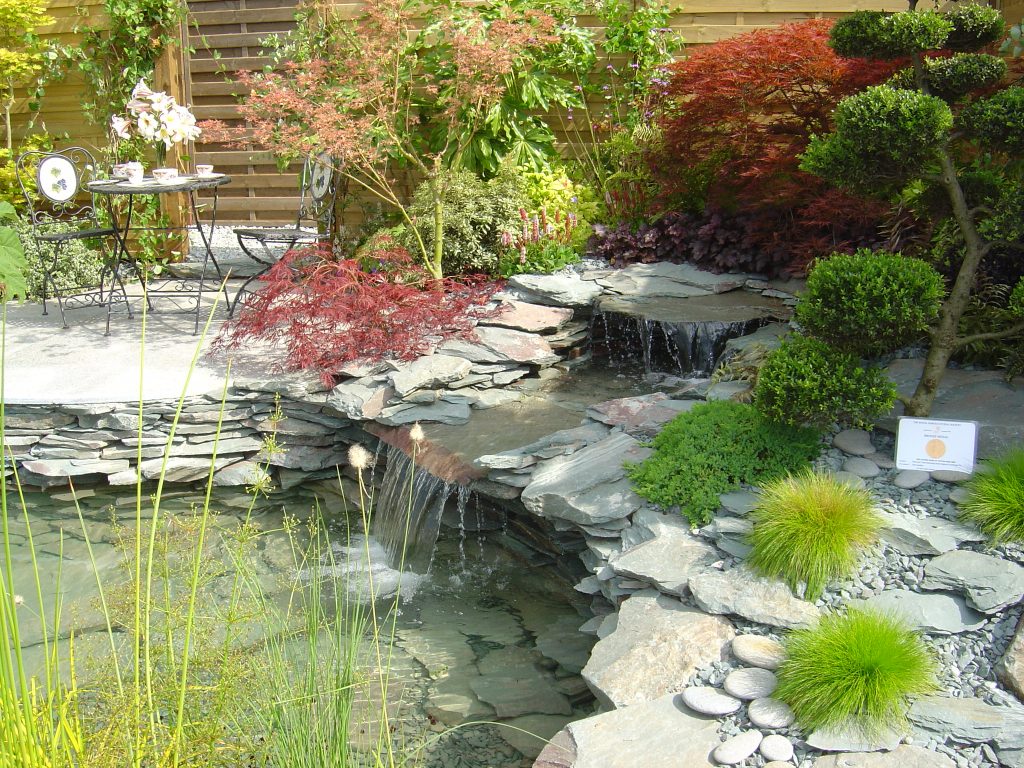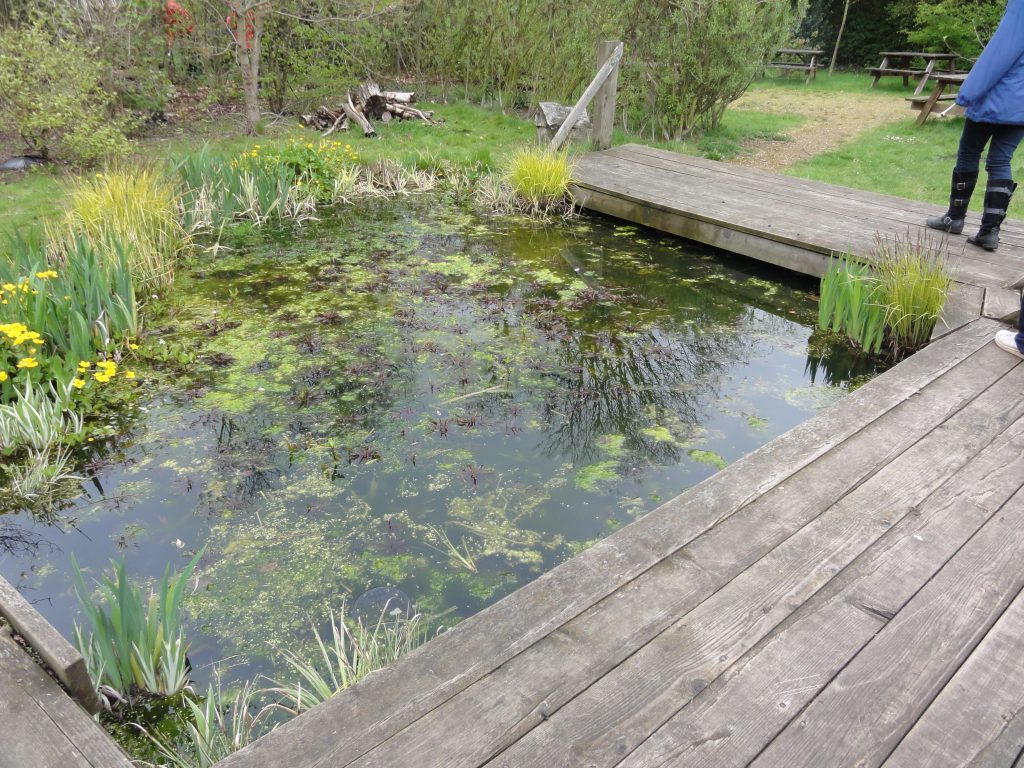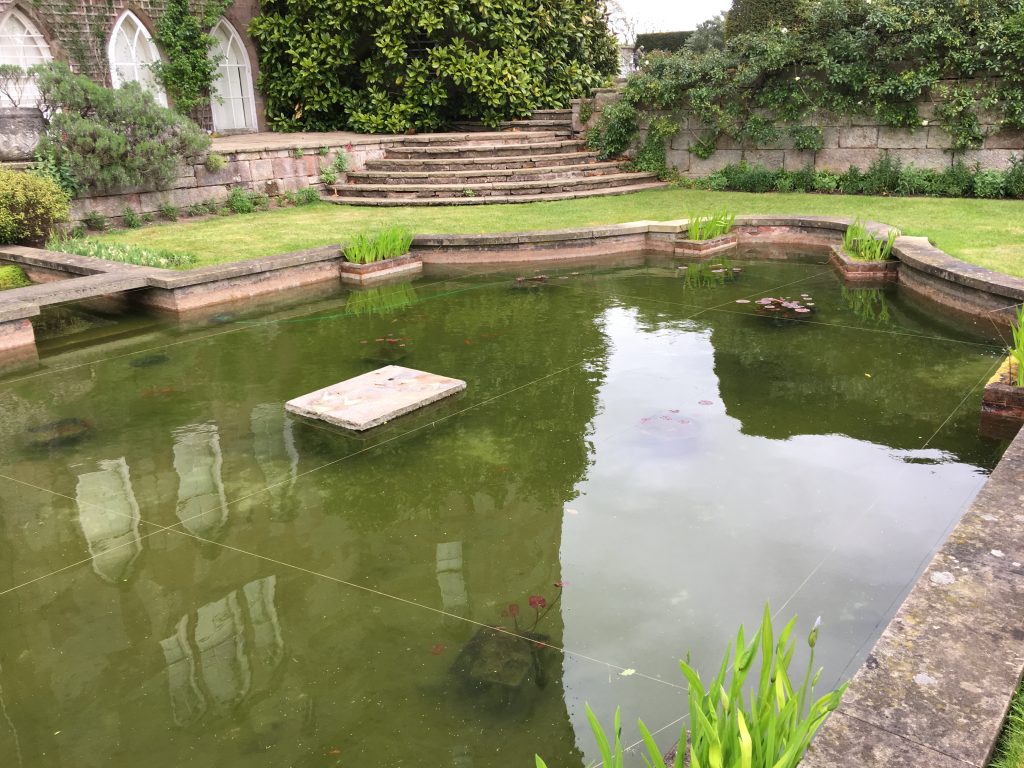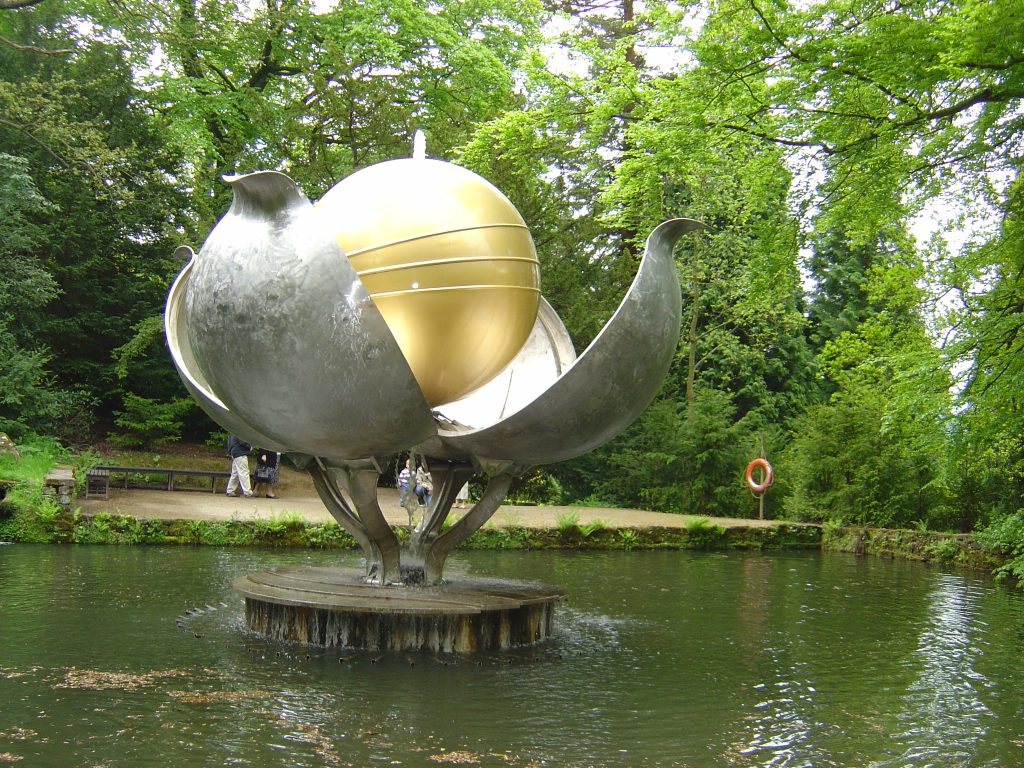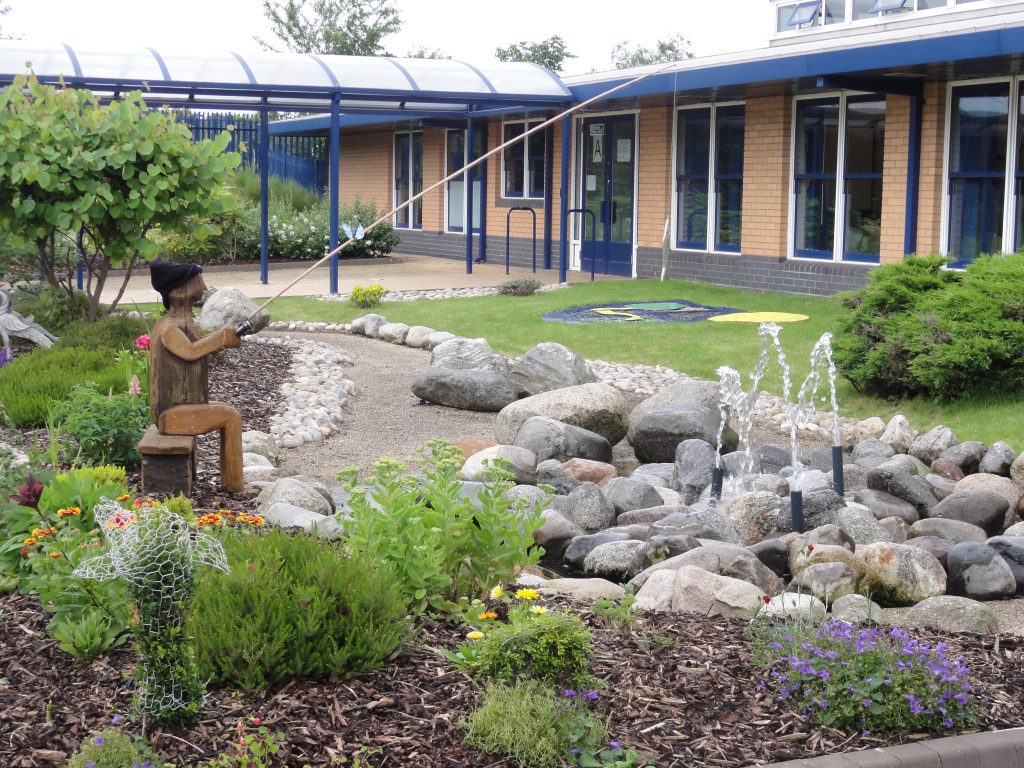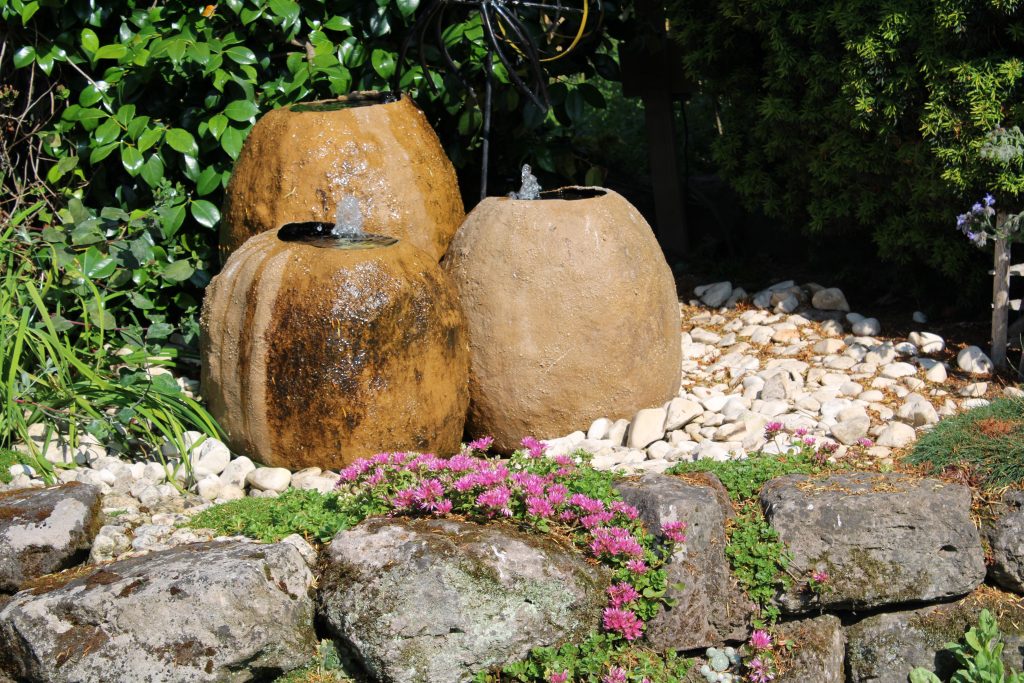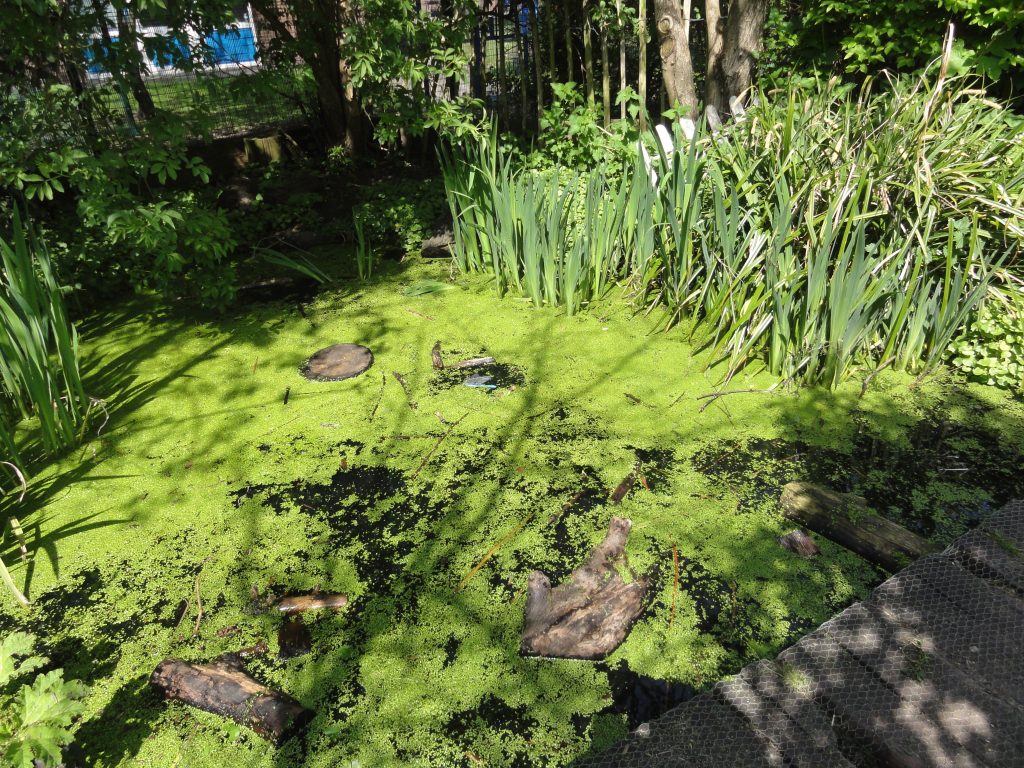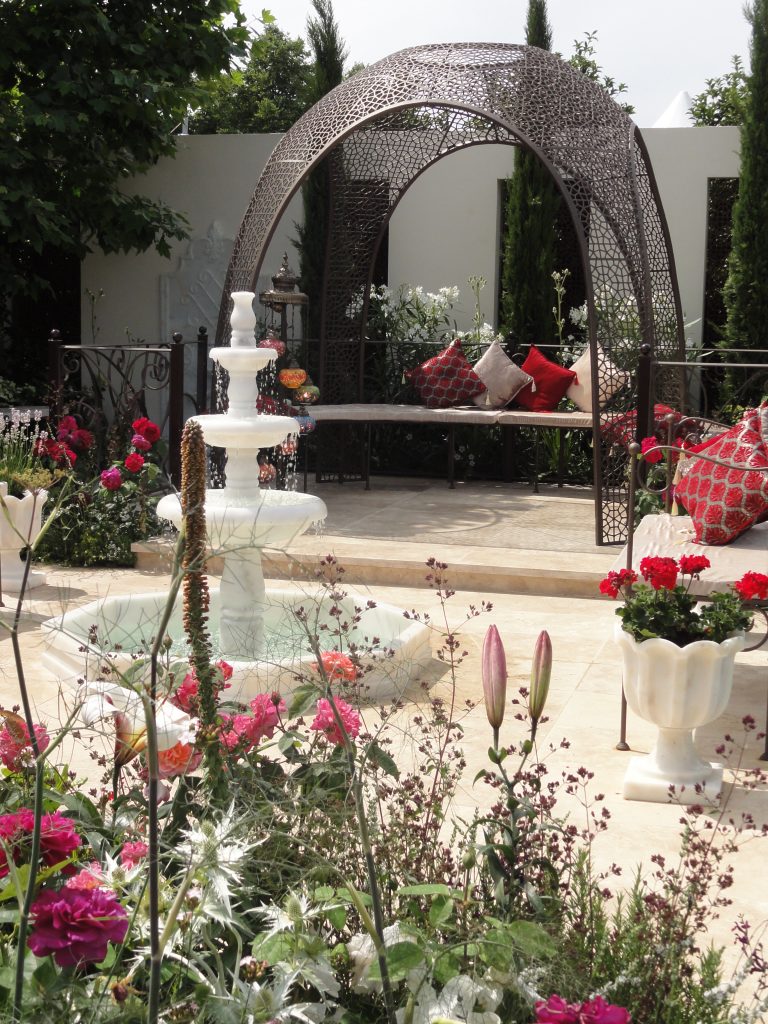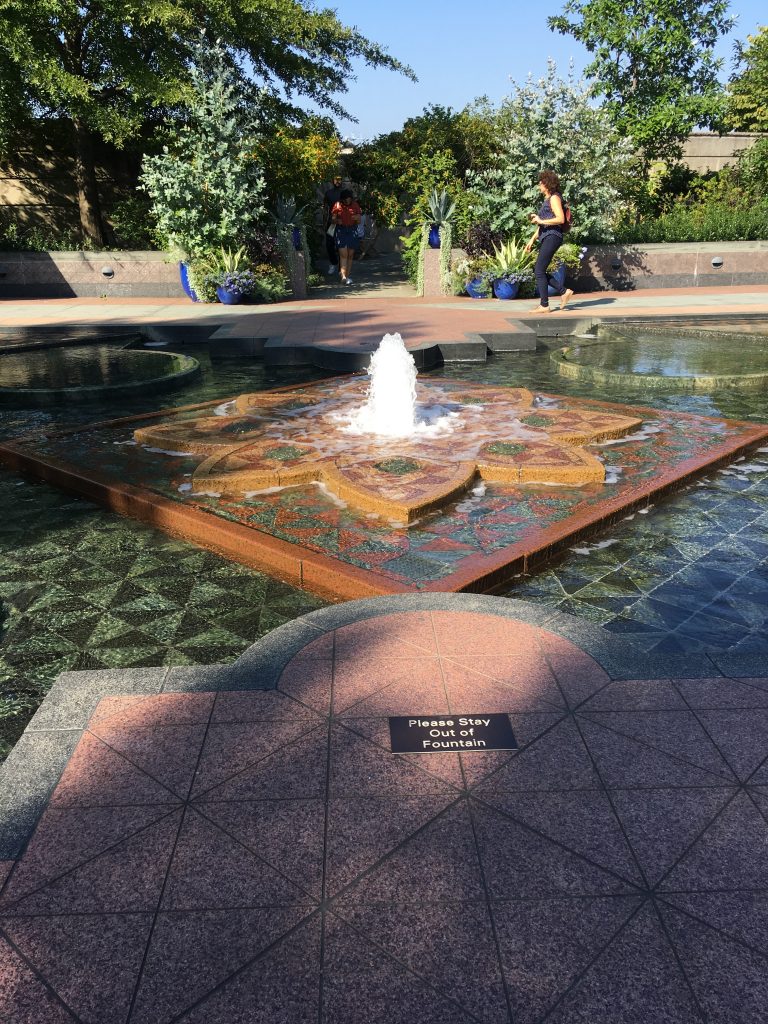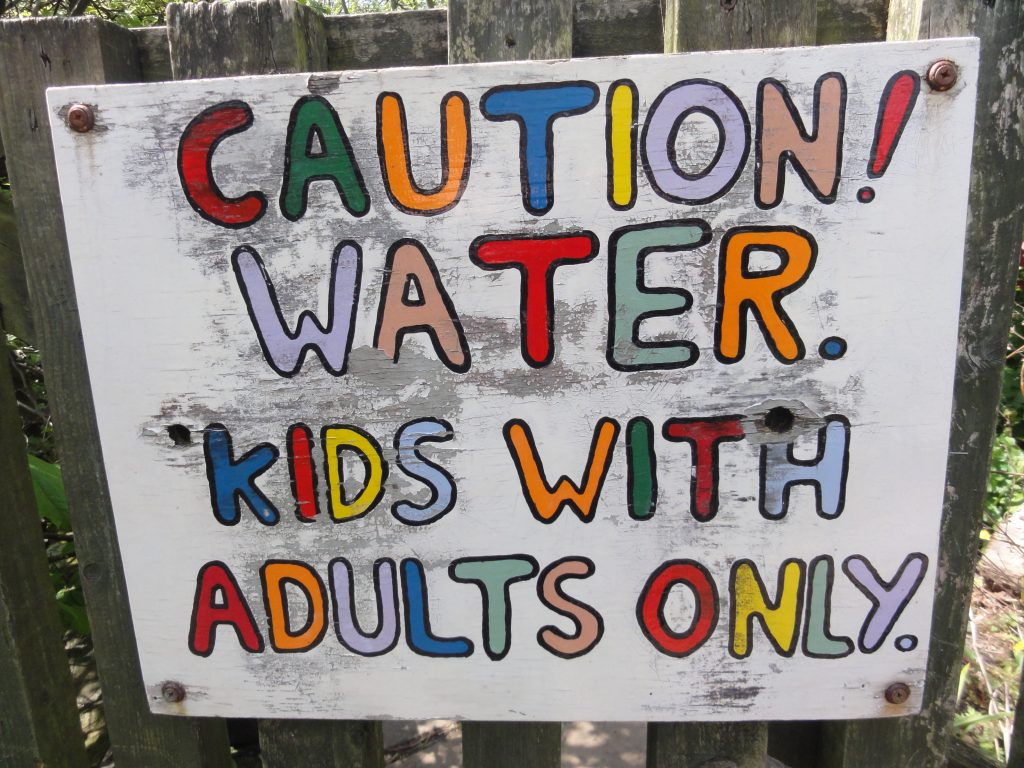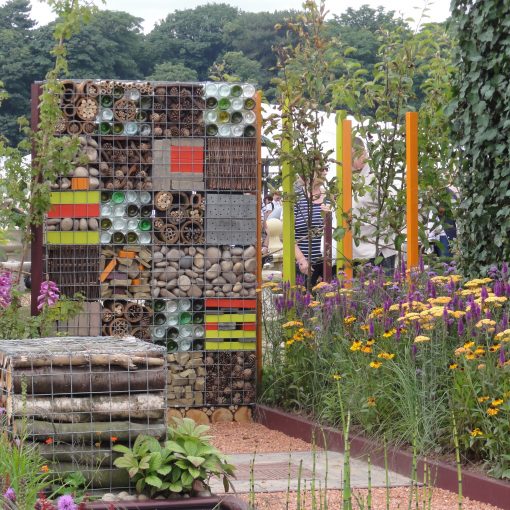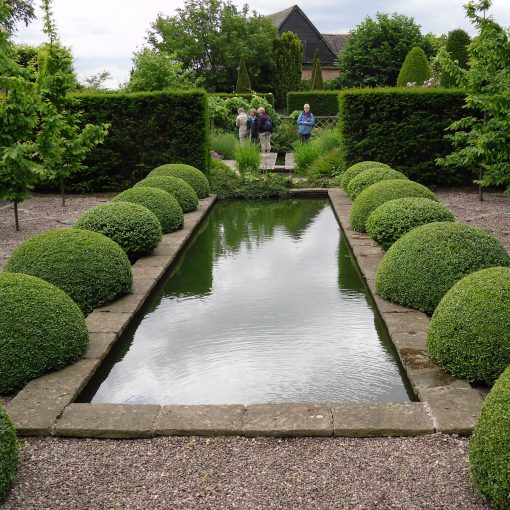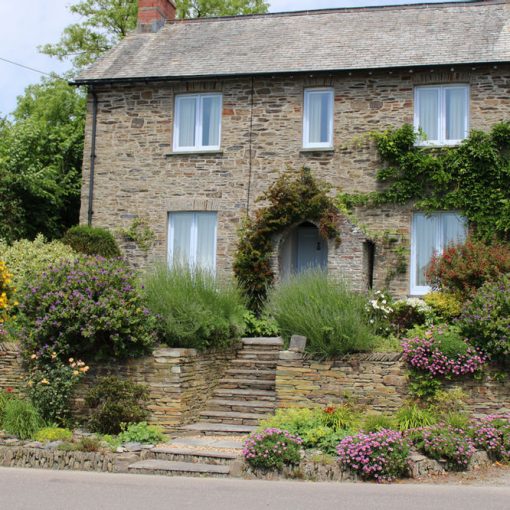R2111 Water Features
Also relevant to formal style in New syllabus Unit 2 Topic 2
Learning Outcomes for RHS Level 2 R2111
- Understanding the effective and appropriate use of hard landscaping materials.
- Describe rock gardens and water features. State TWO examples of manufactured and TWO of natural materials for EACH element.
- Water features to include: open water (raised and wildlife ponds, rills) and self-contained features (fountains, pebble ponds) and materials to include puddled clay, butyl liner, drilled natural stones, metal, glass and plastic, wood and brick for raised ponds.
Introduction
Water can make a fantastic addition to a garden design even in a small space, bringing an added dimension to the garden – sounds, movement and reflection as well as an environment for growing aquatic plants.
A water feature can be defined as:
a landscape feature designed to house, display, or propagate aquatic plants, house wildlife/fish, or to make use of moving or still water as a design feature.
Water features are either open water (Formal and informal ponds and rills) or self-contained features (fountains and pebble ponds). They may be informal or formal in style and will be chosen to be in keeping with the garden design style so that they are cohesive.
Ponds add horizontal interest but water features can also create vertical interest in the form of falls and fountains.
Appearance of Different Water Features
Formal ponds
Formal ponds have specific characteristics:
- There is an open expanse of water
- They are often raised with smooth clean-cut edging of dressed stone or brick.
- They are geometric in shape, often rectangular, square or circular.
- They have a central feature fountain which may have a classical theme such as a statue spurting wate
- They contain minimal planting so that the reflection on the surface can be seen. Sometimes just a single water lily is planted.
- They may contain ornamental fish but usually there is minimal wildlife value.
Informal ponds
Informal ponds have specific characteristics:
- There is an open expanse of water
- They are often classified as wildlife ponds to attract a wide range of mammals, birds, insects and amphibians.
- They are usually built at ground level rather than raised for easy access for creatures.
- They are irregular and serpentine in shape or kidney shaped.
- The margins are softened with planting such as turf, reeds, marginal plants or large natural stones or log edging and has a natural feel.
- There are many levels or shelves where a wide range of deep, marginal, floating and bog plants can be grown.
- There is a gentle slope at one side to allow safe entry and exit for small mammals to drink.
- Sometimes there is a pump which circulates water up to the top of a rocky cascade and back into the pond.
Puddled clay ponds
Puddled clay ponds also have an open expanse of water and are the most naturalistic of ponds and are ideal wildlife ponds. Puddled clay is a traditional way of creating a natural pond by forming an impermeable lining to the base and sides of the pond by treading a mixture of clay and water so as to compact it and produce a water tight layer. It is used to create wildlife ponds.
Here is an informative weblink
http://www.gardeningmasterclass.co.uk/how-to-garden-ponds/puddled-clay-ponds/#1
Rills
- There is an open expanse of water.
- Rills are small scale ornamental canals where water flows by gravity at an almost imperceptible gradient. Can be linear or curved.
- Can also be described as a formal stream.
- They have parallel sides and are often a feature in a contemporary garden.
- The edges are crisp and are often constructed from dressed stone or concrete and are clear of planting.
- Rills may feed into a larger geometric shaped pool.
Fountains
These can take a huge variety of forms where water may trickle, cascade or spout. They may be made from natural stone such as sandstone which is drilled down the centre or from cast concrete, metal or glass.
Pebble ponds
- These are often self-contained water features which have a sump filled with water and covered by mesh.
- The mesh is covered with pebbles and the fountain of water protrudes above ground level and splashes over the pebbles and back down into the water reservoir.
- These are small water features with no open water. The water splashes over pebbles so there is a gentle sound and glistening pebbles which reflect the light.
- Pebbles are the main feature and the permanent wet surface may give them a very different visual appearance to when the pebbles are dry.
- Although no planting or open water these can benefit wildlife such as bees who can drink while perched on a pebble without threat of drowning.
Materials for Water Features
A wide range of materials can be used for the water feature itself, as well as for its lining or surroundings. Materials may be man-made or natural.
Here is a diagram of a wildlife pond and a self-contained pebble pool to show the different layers of materials and how they are constructed.
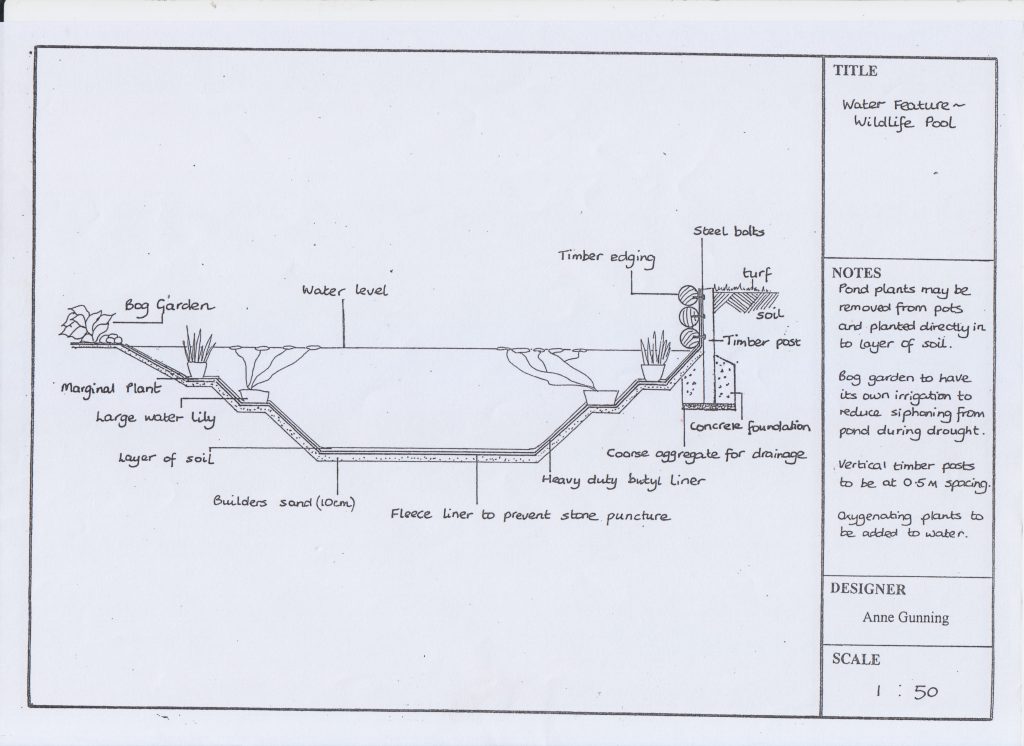
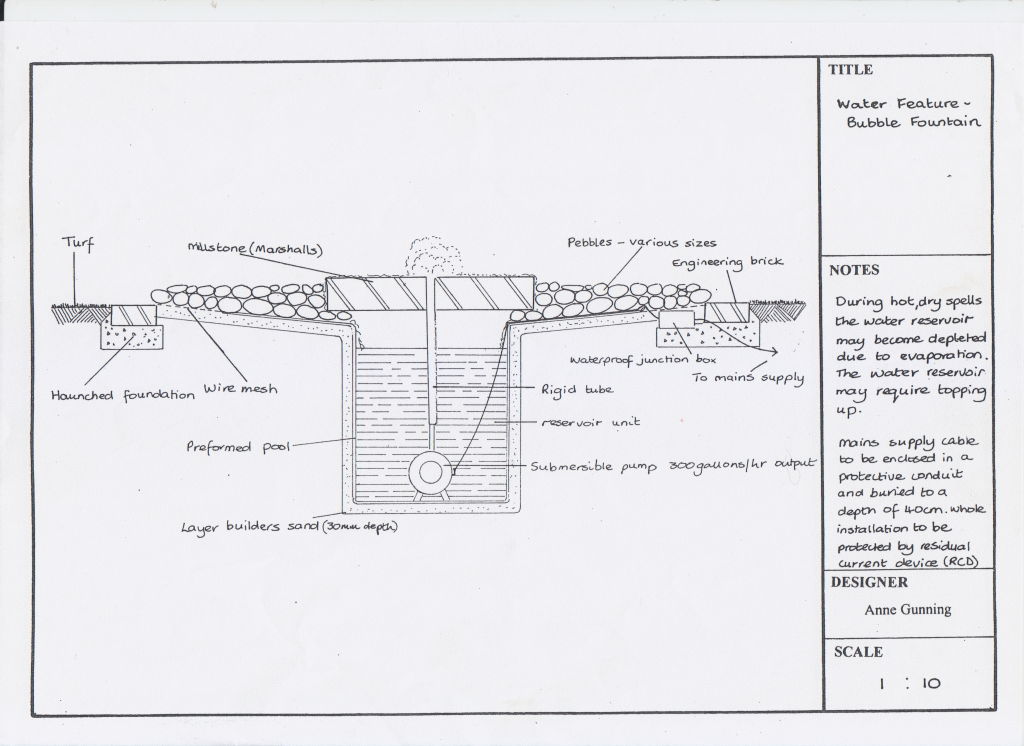
Summary of materials for constructing ponds:

For exam purposes it is important to know which of the materials above are natural or manmade.
See summary table below :

Here is a link to a bamboo deer scarer
https://www.ukbamboo.com/product/shishi-odoshi-deer-scarer/
Ponds as Hazards
There are many hazards associated with a pond; deep water, slippery edges, frozen surface, Weil’s disease (Leptospirosis) These hazards may be exacerbated by the location of the pond, e.g. it may be positioned near a children’s play area or it may be positioned near a play area but hidden from view and parents are unaware it is there, or it may be at the bottom of a steep slippery grassy bank. The area near the pond may also be used in the evening when visibility is low. A combination of pond plus circumstances can make a pond number 1 on the danger list.
However ponds are one of the best features to include in a garden for biodiversity as they attract all sorts of creatures such as amphibians, bats, birds, mammals. Children love pond dipping which is an exciting way to learn all about why different habitats attract different creatures.
A hazard is something which has the potential to cause harm to someone and ponds can be a death trap, particularly for young children. Unless it is fenced off and has a lockable gate no primary school has a pond. The World Health Organisation says drowning is among the three leading causes of death from ‘unintentional injury’, with the highest rates being among children under five. Many of the recorded deaths also happened in someone else’s garden as the parents did not know it was there.
What are the risks?
Risk of falling into pond and drowning (children) – unsupervised young children may fall in as they explore, especially if the pond is in a public play area. It should be made inaccessible and fenced off with a locked gate so that young children are always supervised . There should be signage alerting parents that it is there. There could also be a solid wire mesh fitted just below the surface of the pond to prevent submersion.
Risk of falling into pond and drowning (adults) – For sprightly adults the risk of falling in should be low in normal circumstances as adults will not just walk into a pond by mistake like children will. However other factors such as a steep slope next to a pond, or a disguised edging to an overgrown pond or green algae covering the pond looking like grass could all cause an adult to walk into the pond and fall, slip and drown. Vulnerable adults and the elderly may be more at risk of falling in so it is important to think of the range of people who have access to the space.
Risk of slipping on surfaces next to pond if there is a fountain that is wetting the pond edge or the ground next to the pond is saturated and slippery, there are wet leaves or a build-up of algae on the surfaces near the pond edge. Gardeners who are maintaining the pond such as removing excess vegetation could slip and fall and children could slip and fall in the pond when pond dipping.
Risk of slipping on icy surface. In winter there is the risk that on a large pond older children and adults could walk across thinking it is thick enough to take their weight and there is the risk that they fall through the ice into the cold water and drown or suffer from hypothermia. In freezing temperatures, the surfaces at the edge of the pond are also icy and slippery under foot. Large public spaces with ponds may be closed when a large pond is frozen and there should be plenty of signage telling people not to walk on the ice. Slipping may happen if you are brushing snow off the top of the ice to let light into the pond. Slipping can be minimalized by wearing footwear with good grip, and if the pond is very deep making sure there is someone else there when carrying out maintenance just in case you do fall in so they can help you. Lone working near deep ponds should be avoided. Ponds for pond dipping should have wide platforms at the edge which are made from textured materials such as grooved decking covered by chicken wire for added grip. There should also be a balustrade around the dipping areas.
Risk of infection from microorganisms in the pond such as Weil’s disease (Leptospirosis), which is transferred from rat urine. This is more common in stagnant water. Children again are particularly vulnerable. After contact with the water when maintaining the pond or pond dipping, hands should be washed thoroughly. Rats should be controlled where possible. Protective clothing should be worn and any open wounds sealed over and protected. Gardeners wading into ponds to carry out maintenance should wear protective clothing and shower after work.
Now that we have looked at the design, materials and hazards associated with ponds let’s study and analyse some different pond design photos.
